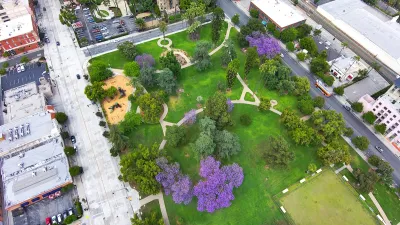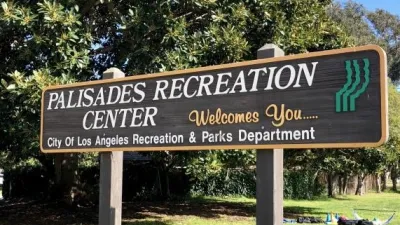America's first public parks were cemeteries. But over time, they've moved from the center of town to the edges. A new book looks at the history of these places of the dead.
The Atlantic talks about the shift in cemetery placement and use with author Keith Eggener, an associate professor of American art and architecture at the University of Missouri.
"The Atlantic: In the book, you note that cemeteries as we know them today first emerged in the 1830s, with the rural cemetery movement. As you mention, Americans had always buried their dead, but did so in churchyards, town commons, or municipal burial grounds. Why the shift to these larger cemeteries?
Keith Eggener: The old church burial grounds were beginning to be seen as inadequate, dangerous, crowded, expensive to maintain, and as carriers of disease. Thousands of burials had taken place on very small plots of ground; these places filled up. You often had burials five or six coffins deep. Sometimes the walls would break down during floods-it was actually rather horrible-coffins would break open and bodies would spill out into the street. During times of epidemics-yellow fever, cholera-cemeteries were seen as centers for the gathering of these diseases and their dissemination. At the same time, cities are becoming more crowded, real estate prices are rising. As the economy was growing, it also came to be the fact that Americans wanted to provide better amenities for their citizens. Cemeteries were seen as the last great necessity. By moving the dead out of the city center to places like Brooklyn and Cambridge, these "rural cemeteries" allowed for much larger burial grounds that also removed the dead from the immediate realm of the living."
FULL STORY: Our First Public Parks: The Forgotten History of Cemeteries

Alabama: Trump Terminates Settlements for Black Communities Harmed By Raw Sewage
Trump deemed the landmark civil rights agreement “illegal DEI and environmental justice policy.”

Study: Maui’s Plan to Convert Vacation Rentals to Long-Term Housing Could Cause Nearly $1 Billion Economic Loss
The plan would reduce visitor accommodation by 25% resulting in 1,900 jobs lost.

Why Should We Subsidize Public Transportation?
Many public transit agencies face financial stress due to rising costs, declining fare revenue, and declining subsidies. Transit advocates must provide a strong business case for increasing public transit funding.

Paris Bike Boom Leads to Steep Drop in Air Pollution
The French city’s air quality has improved dramatically in the past 20 years, coinciding with a growth in cycling.

Why Housing Costs More to Build in California Than in Texas
Hard costs like labor and materials combined with ‘soft’ costs such as permitting make building in the San Francisco Bay Area almost three times as costly as in Texas cities.

San Diego County Sees a Rise in Urban Coyotes
San Diego County experiences a rise in urban coyotes, as sightings become prevalent throughout its urban neighbourhoods and surrounding areas.
Urban Design for Planners 1: Software Tools
This six-course series explores essential urban design concepts using open source software and equips planners with the tools they need to participate fully in the urban design process.
Planning for Universal Design
Learn the tools for implementing Universal Design in planning regulations.
Smith Gee Studio
Alamo Area Metropolitan Planning Organization
City of Santa Clarita
Institute for Housing and Urban Development Studies (IHS)
City of Grandview
Harvard GSD Executive Education
Toledo-Lucas County Plan Commissions
Salt Lake City
NYU Wagner Graduate School of Public Service





























